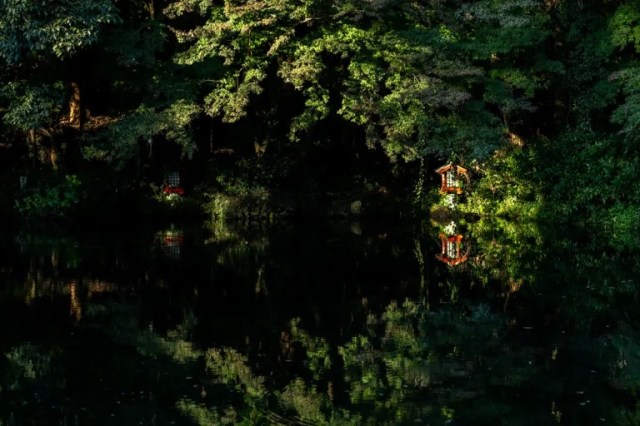Staying one step ahead of the tourist crowds with a visit to Japan’s main Mt. Fuji shrine【Photos】

Quiet culture and beauty are waiting at Fujisan Hongu Sengen Taisha.
In recent years, Japan’s most prominent temples and shrines have become increasingly crowded, particularly as surging inbound international tourist numbers create a constant stream of travelers looking for intrinsically Japanese sights to see. We could spend several days debating the pros and cons of this, weighing the loss of solemn quietude against the revitalization of the surrounding communities, and even taking into consideration the secular, sightseeing-like appeals of shrine/temple travel that Japanese domestic travelers have enjoyed for generations.
Still, there’s no denying that the most major shrines and temples of Tokyo, Nara, and Kyoto in particular have gotten at least a little too crowded for some people’s tastes these days. With the Japan travel boom not showing signs of slowing down anytime soon, it might be time to start exploring places a little farther off the thoroughly beaten tourist path, and that recently took us to Fujisan Hongu Sengen Taisha in the town of Fujinomiya, Shizuoka Prefecture.

If those mentions of “Fuji” have you thinking of Mt. Fuji, you’re spot-on. Fujisan Hongu Sengen Taisha is the head shrine of the many Sengan shrines (also sometimes called Asama shrines) that can be found across Japan, and their primary object of worship is Mt. Fuji.

Fujisan Hongu Sengen Taisha may not be as opulent or as suited for implementation as social media like-bait as Japan’s more famous shrines, but it has a quiet beauty of its own, and also plenty of cultural significance. The current main building was constructed in 1604 with shogun Tokugawa Ieyasu as its sponsor, but the shrine itself is said to have been founded roughly 2,000 years ago. Sitting to the southwest of Mt. Fuji, Fujisan Hongu Sengen Taisha is along the route pilgrims to the mountain would take on their way from Kyoto, earning it a reputation as the traditional “entrance” to Japan’s tallest mountain before the capital was moved to Kyoto and travel patterns shifted so that more visitors now approach Mt. Fuji from the north and east.
Fujisan Hongu Sengen Taisha is also associated with Konohanasakuya-hime. Konohanasakuya-hime, also known as Sakuya-hime for short, is a goddess who appears in Japanese folklore, where she’s often referred to as one of the most beautiful of all divine beings. When Sakuya-hime became pregnant shortly after her marriage to the god Ninigi-no-Mikoto, in order to prove that the children she was bearing were indeed her husband’s, Sakuya-hime sealed herself in a hut and set it ablaze, asserting that the flames would not harm Ninigi-no-Mikoto’s children, and the subsequent safe birth of three healthy boys led to Konohanasakuya-hime being seen as a source of divine protection against fires and provider of safe births.

Near the entrance to the shrine is a stream, and following it just a short ways upriver brings you to Wakutama Pond and its pristinely clear water.

The pond formed some 10,000 years ago, carved into the earth by lava flowing from Mt. Fuji. Once the basin cooled and hardened, it filled with rain and winter snow melting from the mountain, and pilgrims on their way to summit Fuji would first purify their bodies by bathing in the pond.


Fujisan Hongu Sengen Taisha is especially lovely in the spring, when the hundreds of cherry blossom trees on its grounds flower, and the shrine also holds demonstrations of yabusame (horseback archery) each May. Making an off-season visit, though, allowed us to take in the sights without fighting crowds, something that’s becoming harder to do at many other shrines these days.
▼ This sort of two-story construction is a unique architectural trait of Sengen/Asama shrines.

At the same time, Fujisan Hongu Sengen Taisha is a relatively easily accessible place to visit. It’s just a 15-minute walk from Fujinomiya Station on the Minobu Line (which connects the Mt. Fuji area with Kofu, Yamanashi’s prefectural capital city), and about 30 minutes by taxi/bus from Shin Fuji Station on the Tokaido Shinkansen.
▼ The walk from Fujinomiya Station to Fujisan Hongu Sengen Taisha
▼ The town of Fujinomiya itself also offers adequate travel amenities, like this cafe we found on the approach to the shrine grounds.


So should you ever catch yourself sighing, grinding your teeth, or otherwise upset about how crowded some of Japan’s shrines and temples are getting, just remember that there are more to discover with a little extra searching.
Related: Fujisan Hongu Sengen Taisha
Photos ©SoraNews24
● Want to hear about SoraNews24’s latest articles as soon as they’re published? Follow us on Facebook and Twitter!
Credit:

0 comments: